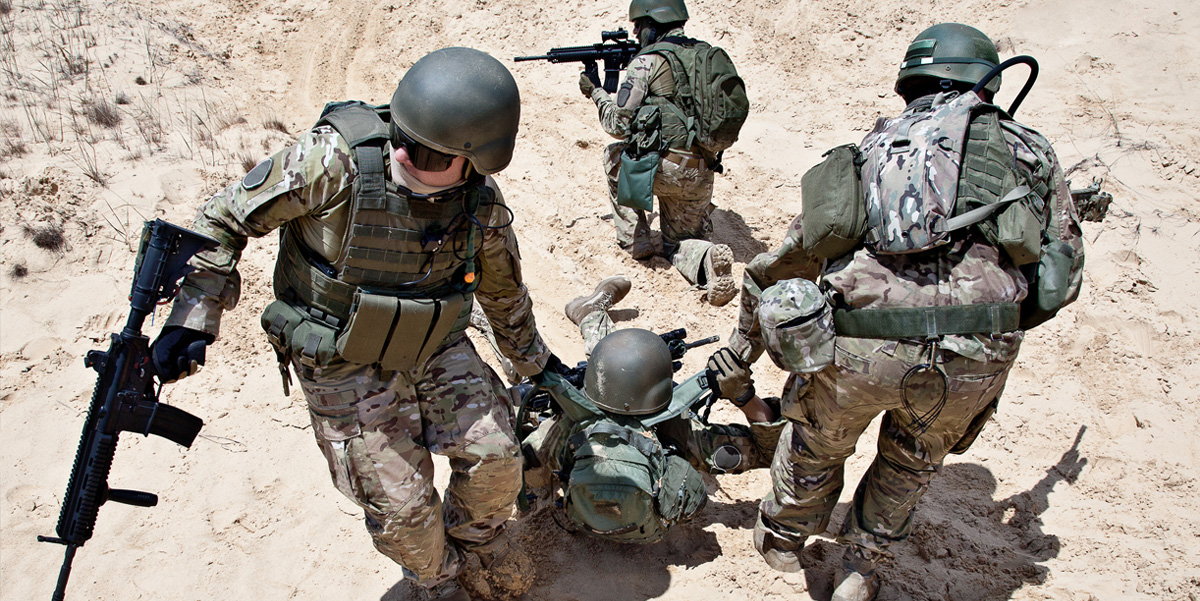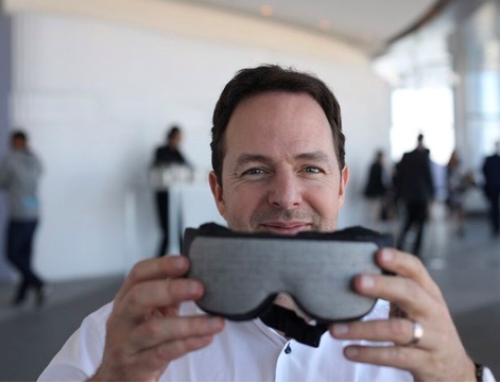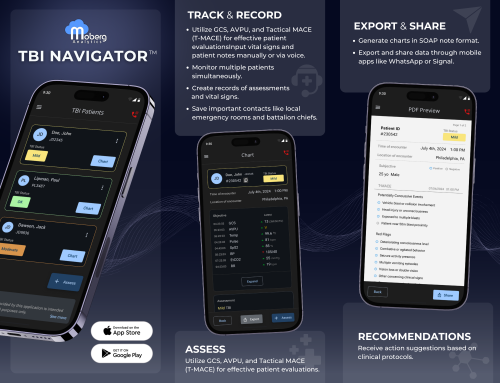With the support from Joint Program Committees (JPCs) of the Defense Health Agency, and the Simulation & Training Technology Center (STTC), Information Visualization and Innovative Research (IVIR) Inc. has been working on The Joint Emergency Trauma Simulation (JETS) program. The original objective of this program was to provide live, virtual, constructive, and gaming (LVCG) simulations to assess and evaluate the patient handoffs and transfers in a controlled and standardized way to help address these areas. IVIR created an advanced prototype that surpassed this goal, by developing a technology which allows current and future clinical simulations to interact with each other as well as with warfighter simulations. The development of this prototype is a major milestone in high-fidelity medical simulation. It provides a means to create bespoke simulated patients, transfer a wounded or sick patient from a tactical simulation to a medical simulator, anywhere there is Internet access, all while supporting the addition of after-action review systems, advanced physiology engines and learning management systems. In short, JETS enables clinical simulation training to be fully integrated into multi-echelon combat training.
The U.S. Department of Defense’s (DoD)’s Medical Health System (MHS) aims to provide a medical benefit commensurate with the service and sacrifice of more than 9.6 million active duty personnel, military retirees, and their families. Further, MHS must accomplish this mission on land, at sea, and in the air, in very diverse environments, ranging from civilian-type hospitals to remote locations under hostile and dangerous conditions across the nation and around the world. As a result of the enormous challenges of training and maintaining the proficiency of such a large and diverse clinical workforce, the DoD was an early investor and adapter of medical simulation. Today, the DoD owns thousands of medical simulators and simulation support systems ranging from simple part task trainers to full body mannequins and holographic training suites.
Today, the Joint Emergency Trauma Simulation (JETS) program aims to assist the DoD clinical training challenge involving the connection of commercial clinical simulation systems to create custom simulation environments to support training needs. Since 2016, the DoD has funded IVIR Inc. to conduct research regarding the use of simulation to improve the care of patients under field conditions. IVIR’s efforts focused on patient care issues, associated Prolonged Field Care (PFC) scenarios, errors that can occur during the transfer of patients between roles of care, and the development of processes for networking commercial simulations and simulation support systems. The results of this research have led to the development of an advanced prototype of the JETS system.
The core functionality of JETS is that it allows current, commercial off-the-shelf, medical simulations, and simulation support systems, to communicate with each other, in a federated network, over a standard Internet or intranet connection. This allows multiple simulation components to be combined to create a training micro system representing a single, customized simulated patient. The program also allows simulated patients to be part of a macro system, where they are digitally transferred to other patient simulators as an analog of the transfer of real-world patients through the various MHS Roles of Care.
By digitally connecting (for example) a TCCS Plus manikin to an Angio Mentor REBOA simulator, along with a physiology engine such as HumMod to a JETS federation, you now have a simulation training environment that supports training individual and collective (team) tasks for the full clinical situation in all the domains of learning. Adding an After Action Review (AAR) system, such as SIMULATIONiQ Portable, to the JETS federation creates a debriefing system that is not only capturing audio and video of the simulation session, but also receiving, and capturing data directly from the simulators to provide a complete instructional system!
The JETS system developed by IVIR Inc. and its collaborators, uses the High Level Architecture (HLA) standard, and an open source run-time infrastructure (RTI), that each simulation system connects to. As part of the effort, a Medical Modeling and Simulation (MMS) Federation Object Model (FOM) was developed to establish a standard dictionary for medical simulation, allowing each system to speak the same language. Each simulation system joining the JETS federation requires software that enables it to communicate data across this RTI. The design is such that the JETS architecture does not require access to the proprietary computational engines of a commercial simulation or simulation component. This allows simulations to communicate, and simulated patients to be digitally transferred to other patient simulators, as an analog of the transfer of real-world patients through the various MHS Roles of Care.
JETS also allows multiple simulation systems to be integrated to provide enhanced training capabilities not normally available in a single system. The JETS federation can also be compatible with other network protocols via a network gateway or similar solution. This allows a JETS federation to interact with other types of medical simulation systems using a different network protocol, such as the Advanced Modular Manikin (now MOHSES), as well as current, and future, military tactical and strategic simulations.
The original mission of the program was to develop architectural models that would be used to guide the construction of integrated simulations and training modules for en route care training (ERC). During JETS Phases I and II, studies were conducted that aimed to add to the current body of knowledge by identifying and addressing gaps in joint ERC training and constructing a top-level interoperable architectural framework for a training system of systems. The scope of JETS broadened during Phase III, from a narrow focus supporting ERC training, to creating a technology ecosystem system that facilitates a major paradigm shift in how clinical simulation is used. Creating a system that allows clinical simulations, originally designed to train a specific set of individual clinical skills, to be digitally combined into a micro system creating a bespoke clinical experience. These clinical micro systems can then be combined into a macro system as described above, that facilitates true multi-echelon training, in a manner similar to, and compatible with, that which can be currently achieved in simulated strategic and tactical training.
The Phase III effort completed design and develop an extended demonstration system for the Medical Modeling Simulation (MMS) Federated Object Model (FOM), as a component of a JETS/POINTS and Prolonged Field Care Training (PFCT) system of systems, using COTS and GFE components, and create and initiate a multiple channel marketing plan for the MSE.
At the end of the Phase III project, IVIR successfully demonstrated JETS to the government customer at Ft. Sam Houston in San Antonio, Texas. The primary goals were to show a multi-echelon clinical simulation training event, the ability to handle multiple casualties, and the ability to interoperate with tactical simulation systems. The main scenarios involved multiple patients being transferred between different simulators across several roles of care. In one scenario, a trauma patient was started in a serious game and transferred to a full body patient manikin with an attach part task trainer. In another scenario, standardized patients were enhanced with JETS-enabled modules. JETS allows these different training events to all be linked to the same patient, so that the treatments in one role of care had a direct impact on the patient status in the next role of care.
JETS was also able to include non-medical systems such as a learning record store (LRS) and after action review systems, which were integrated for automated data capture. Learner performance results from the demonstration were transferred to an xAPI-based LRS. The project also successfully demonstrated the integration of a tactical simulation system, OneSAF. By using the MEDEVAC requests developed in the MMS FOM, the JETS federation could send MEDEVAC requests to OneSAF, which then handled the vehicle and patient movement modeling while providing status updates back to the JETS federation.
Several benefits could be seen by making JETS a program of record – it can create multi-echelon training, including individual, team (Joint), and multiple Roles of Care, into a cohesive exercise, using COTS equipment, and without regard to time and distance. It can connect to tactical simulations as well as medical simulations. Furthermore, the use of JETS as a military standard may facilitate wider adoption of the JETS system by the simulation industry, and in turn, furthering the development of the JETS prototype.
From the technology point of view, a key next step is to develop a software development kit (SDK), or similar solution, that will allow third party vendors to better understand the JETS architecture. This SDK would also provide tools to make integration of new simulation systems into the JETS federation a more simple process. Future development will also include continuous updates to the MMS FOM to make sure that all the simulation data needed for the desired training exercises are accounted for in the JETS standard. In addition to the SDK, more customizable scenario tools will also need to be developed to support a wider range of medical training events that make use of both current and future JETS-enabled simulation systems.
The research project award recipients were selected from the Offerors who responded to MTEC’s Request for Project Proposals for a modular, integrated, sustained, maintained, and modernized training platform for the DOD to support training for individual, team, and unit skills across a complete chain of evacuation in the continuum of care (Solicitation #MTEC-17-07-JETS).
https://www.ivirinc.com/joint-emergency-trauma-simulation-jets/

More about IVIR
Information Visualization and Innovative Research (IVIR) Inc. is a certified, Woman-Owned Small Business (WOSB) located in Sarasota, FL. It is dedicated to Innovative Research and Information Visualization with emphasis on training effectiveness, program management, systems engineering, and community healthcare and education. IVIR encompasses the use of applied science and research in all aspects of improving the performance of people and their organizations. IVIR Inc.’s primary focus is medical modeling and simulation in military, civilian and foreign healthcare training markets.
IVIR assembled a team of teams to create JETS, this team consisted of HC Simulation, Pitch Technologies, Education Management Solutions (EMS), 3D Systems, Engineering & Computer Simulations, Inc. (ECS), Calytrix, Cole Engineering Services Inc. (CESI), The University of South Florida (USF), and program Subject Matter Experts (SMEs) and Consultants.





